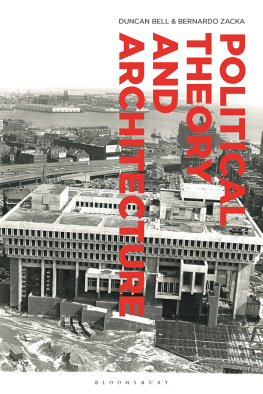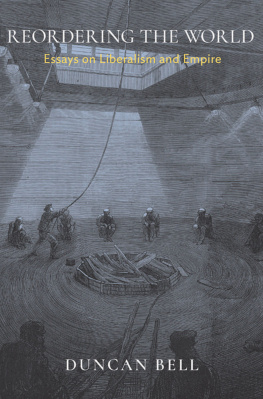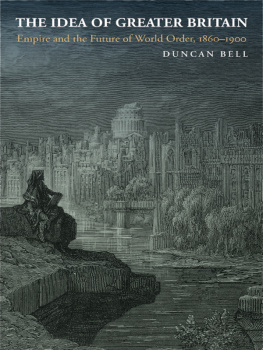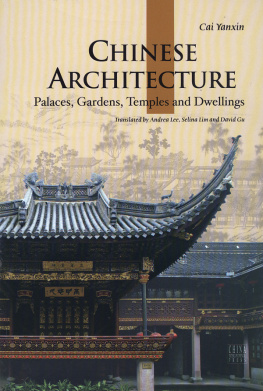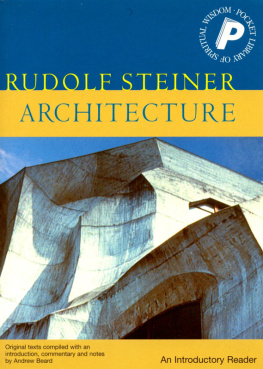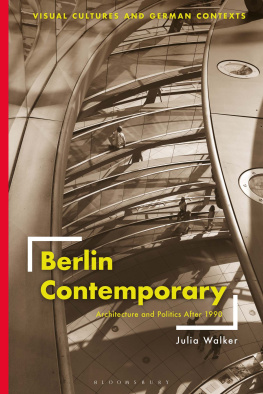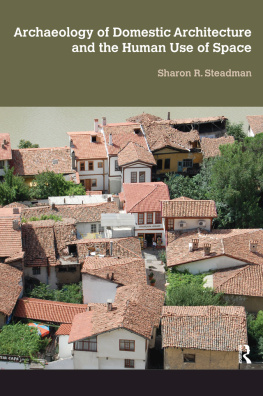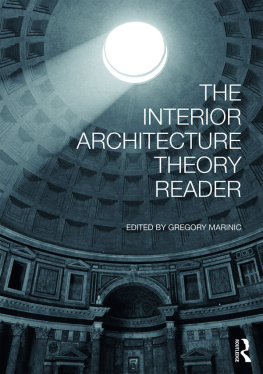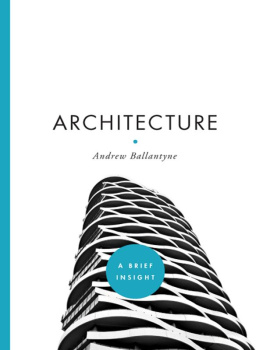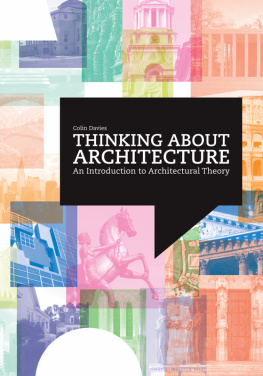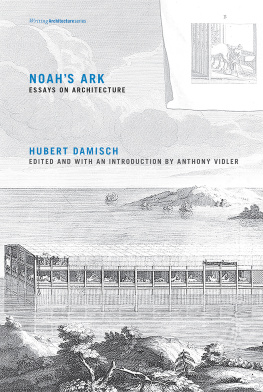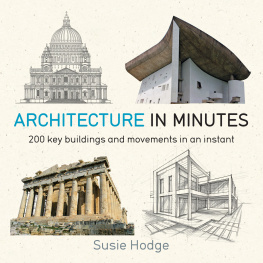Political Theory and Architecture
Political Theory and Architecture
EDITED BY
Duncan Bell & Bernardo Zacka

ALSO AVAILABLE AT BLOOMSBURY
Object-Oriented Architecture, Graham Harman, ed. Joseph Bedford
Bare Architecture: A Schizoanalysis, Chris L. Smith
Space after Deleuze, Arun Saldanha
Ethics Under Capital: MacIntyre, Communication, and the Culture Wars, Jason Hannan
Politics in the Times of Indignation: The Crisis of Representative Democracy, Daniel Innerarity
Creative Ecologies: Theorizing the Practice of Architecture, Hlne Frichot
Atmospheric Architectures: The Aesthetics of Felt Spaces, Gernot Bhme (ed. and trans. Tina Engels-Schwarzpaul)
Architecture in Abjection: Bodies, Spaces and Their Relations, Zuzana Kovar
BLOOMSBURY ACADEMIC
Bloomsbury Publishing Plc
50 Bedford Square, London, WC1B 3DP, UK
1385 Broadway, New York, NY 10018, USA
BLOOMSBURY, BLOOMSBURY ACADEMIC and the Diana logo are trademarks of Bloomsbury Publishing Plc
First published in Great Britain 2020
Copyright Duncan Bell, Bernardo Zacka, and Contributors, 2020
Duncan Bell and Bernardo Zacka have asserted their right under the Copyright, Designs and Patents Act, 1988, to be identified as Editors of this work.
For legal purposes the constitute an extension of this copyright page.
Cover design by Simon Goggin
Cover image: Boston City Hall (c. 1968) Boston City Archives
All rights reserved. No part of this publication may be reproduced or transmitted in any form or by any means, electronic or mechanical, including photocopying, recording, or any information storage or retrieval system, without prior permission in writing from the publishers.
Bloomsbury Publishing Plc does not have any control over, or responsibility for, any third-party websites referred to or in this book. All internet addresses given in this book were correct at the time of going to press. The author and publisher regret any inconvenience caused if addresses have changed or sites have ceased to exist, but can accept no responsibility for any such changes.
A catalogue record for this book is available from the British Library.
A catalog record for this book is available from the Library of Congress.
ISBN: HB: 978-1-3500-9659-2
ePDF: 978-1-3501-0375-7
eBook: 978-1-3501-0376-4
Typeset by Integra Software Services Pvt Ltd.
To find out more about our authors and books visit www.bloomsbury.com and sign up for our newsletters.
Ali Aslam
Assistant Professor of Politics, Mount Holyoke College
Duncan Bell
Professor of Political Thought and International Relations, and Fellow of Christs College, University of Cambridge
Ronald Beiner
Professor of Political Science, University of Toronto
Gbor Betegh
Laurence Professor of Ancient Philosophy, and Fellow of Christs College, University of Cambridge
Nathaniel Coleman
Reader in History and Theory of Architecture, Newcastle University
Fonna Forman
Associate Professor of Political Science and principal in the political and architectural practice Estudio Teddy Cruz + Fonna Forman
Benjamin Hofmann
PhD Student in Political Theory, Princeton University
Margaret Kohn
Professor of Political Science, University of Toronto
Randall Lindstrom
Architect and Adjunct Lecturer, Discipline of Architecture, University of Tasmania
Jeff Malpas
Distinguished Professor of Philosophy, University of Tasmania, and Visiting Distinguished Professor, La Trobe University
Mihaela Mihai
Senior Lecturer in Political Theory, University of Edinburgh
Jan-Werner Mller
Professor of Politics, Princeton University
Josiah Ober
Mitsotakis Professor of Political Science and Classics, Stanford University
Antoine Picon
G. Ware Travelstead Professor of the History of Architecture and Technology, Harvard University
Nancy L. Rosenblum
Senator Joseph Clark Professor of Ethics in Politics and Government, Harvard University
Barry Weingast
Ward C. Krebs Family Professor of Political Science, Stanford University
Bernardo Zacka
Assistant Professor of Political Science, MIT
Duncan Bell would like to thank the following for enlightening discussion on the politics of architecture, and for assistance with this volume: Sarah Fine, Joel Isaac, Max Sternberg, the students in his occasional M.Phil seminar on Architecture and Political Theory, and especially, Bernardo Zacka.
For stimulating conversations on architecture, Bernardo Zacka is grateful to Nicholas Ray, Oded Naaman, Abdallah Daher, Jan Mach and Jan Vondrk at Mjlk architekti, and especially to Duncan Bell and Valentina Pugliano.
The editors would like to thank Ali Aslam, Margaret Kohn, and Matthew Longo for their valuable feedback, Hannah Woods and Danny Tobin for their excellent research assistance, and Liza Thompson, our editor at Bloomsbury, for her enthusiastic support.
Duncan Bell and Bernardo Zacka
This volume aims to resume a dialogue between political theory and architecture, two fields that have conversed only intermittently. The essays we have assembled begin from the premise that architecture is not merely a backdrop to political life but a political force in its own right. Taken together, they aim to give countenance to that claim and to show how our thinking about politics can be enriched by a closer attention to the built environment.
The political significance of architecture can be explored from a variety of disciplinary angles, including architectural theory, geography, urban politics, the anthropology of space, and the sociology of the built environment. While the present volume draws on these literatures, it is firmly rooted in yet another field, political theory. It seeks to capture how contemporary political theorists, whose research does not typically center on architecture, have encountered it in their work, what substantive issues it has raised for them, and how they have sought to approach it from within their own disciplinary traditions. To broaden the range of perspectives further, the political theorists who form the core of this volume are joined by a group of philosophers and architectural theorists with cognate interests.
Substantively, our aim is twofold: to demonstrate the salience of a range of political theoretical approaches to the analysis of architecture and to show that architecture deserves a place as an object of study in political theory, alongside laws, policies, institutions, norms, practices, imaginaries, and discourses. Our hope is that political theorists will find in the collection a variety of models for engaging with architecture and that architects will encounter new ways into familiar terrain by seeing their field refracted through the lens of another discipline.
Architecture as a basic social institution
For a discipline that prides itself on interrogating the structures that govern social life, contemporary political theory has had surprisingly little to say about the built environment. While references to public space and the public sphere abound, they tend to be metaphorical, with the first designating the shared world of artifacts and institutions that relate us to one another (Arendts common world), and the second the discursive platforms in which people discuss matters of common concern (Habermass public sphere).
For just as we think that the structure of our laws can channel behavior, express collective values, and foster a public ethosso too, Plato suggests, does the built environment.
Next page
